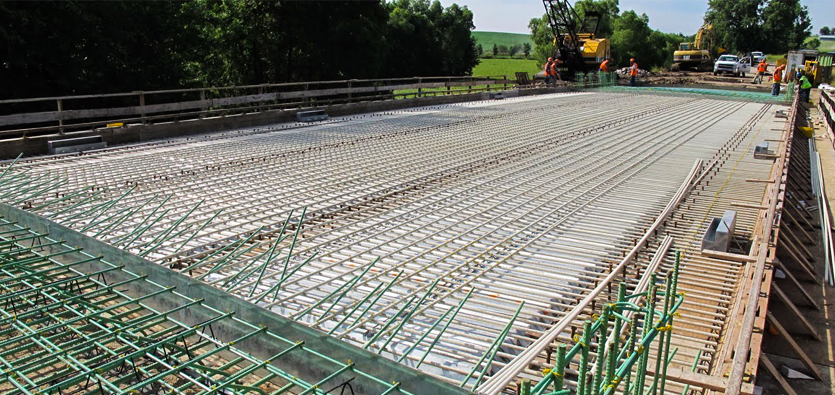Composites: The Trick to Modern, Sustainable Building
Composites: The Trick to Modern, Sustainable Building
Blog Article
Unlocking the Ecological Advantages of Recycled Composites in Building And Construction and Style
In the realm of construction and style, the usage of recycled composites holds substantial guarantee for boosting sustainability techniques and reducing environmental impact (composites). By including these innovative products, there is a possible to resolve essential concerns such as waste reduction, power preservation, and a reduction in carbon footprint. The change in the direction of a much more lasting future in these industries pivots on opening the full possibility of recycled composites. This conversation will discover the multifaceted benefits and challenges connected with integrating recycled compounds into building and design, offering a glance right into the transformative opportunities that lie in advance.

Ecological Impact Decrease
The decrease of ecological impact through the use of recycled compounds in construction and style plays a vital duty in sustainable practices. By including recycled composites into building products, the building and construction sector can substantially lower its carbon impact and add to a much more green future. These lasting products, made from repurposed plastics, wood fibers, or various other recycled elements, offer a viable alternative to conventional construction products without jeopardizing on high quality or durability.
Recycled compounds aid draw away waste from garbage dumps and decrease the requirement for extracting resources, hence saving natural deposits. Additionally, the manufacturing procedure of these compounds commonly eats much less power and discharges less greenhouse gases compared to generating virgin products (composites). This change in the direction of making use of recycled compounds not just minimizes environmental damage but additionally advertises a circular economic climate by urging the reuse of products that would certainly otherwise be thrown out
Waste Minimization
With a concentrate on minimizing waste in construction and style, the integration of recycled composites uses a lasting service to decrease ecological influence. Waste minimization is a crucial aspect of sustainable techniques, and the use of recycled composites provides an opportunity to accomplish this objective properly. By making use of products that have actually currently offered their first objective, such as recycled plastics or recovered wood fibers, the construction and style sectors can substantially reduce the quantity of waste produced and sent out to landfills.
Recycled composites have the potential to divert significant quantities of waste from conventional disposal approaches, adding to a much more circular economic situation where resources are used efficiently. Furthermore, the manufacturing procedure of recycled compounds typically eats less energy and generates less emissions contrasted to virgin materials, further reducing the ecological footprint of building and construction and layout projects.
Implementing waste minimization methods through the consolidation of recycled compounds not just aids in saving natural deposits yet additionally advertises an extra sustainable technique to building and creating for a greener future.
Energy Preservation
Integrating recycled composites not only minimizes waste in building and design but additionally plays a crucial duty in improving power conservation practices within the market. The use of recycled composites in building and construction can dramatically add to energy preservation via various methods. To start with, the production of virgin materials commonly requires significant energy inputs, whereas making use of recycled compounds consumes less power, thereby minimizing overall power usage. Additionally, including recycled composites can add to far better insulation properties in structures, lowering the need for extreme heating or air conditioning, and as a result reducing energy use for climate control. In addition, the lightweight nature of numerous recycled composites can cause lighter frameworks, requiring less energy for transport and installation. By promoting using recycled compounds in building and construction and design, the industry can make significant strides towards achieving power efficiency and decreasing its carbon impact, inevitably adding to a more sustainable constructed environment.
Carbon Impact Reduction
Enhancing sustainability basics techniques through the usage of recycled composites in building and layout substantially lowers the carbon impact of the market. By including recycled products into the manufacturing read here of compounds, the demand for virgin sources decreases, causing reduced energy usage and greenhouse gas emissions connected with traditional production processes. This reduction in carbon footprint is essential in combating climate change and advertising a more ecologically pleasant approach to building and style.
The carbon footprint decrease achieved with the fostering of recycled compounds aligns with the worldwide push in the direction of lasting practices and the decrease of industrial emissions. Eventually, by prioritizing the combination of recycled compounds, the industry can make substantial strides in decreasing its carbon impact and contributing to an extra lasting future.
Lasting Future
The integration of recycled compounds in building and construction and style not only addresses instant ecological problems however likewise lays a strong structure for a sustainable future in the market. By including recycled composites into building products and items, the building and construction and design sectors can substantially lower their reliance on virgin resources, causing a more round economic climate. This shift in the direction of sustainability is critical for reducing the ecological effect of conventional building and construction methods, which commonly cause high degrees of waste generation and resource deficiency.

Conclusion
In verdict, recycled compounds provide considerable environmental advantages in building and layout by lowering ecological impact, lessening waste, preserving power, lowering carbon impact, and promoting a sustainable future. Embracing the use of recycled composites can add to a much more environmentally-friendly strategy to building and style, inevitably leading to an extra lasting and greener future for all.
The reduction of environmental effect via the usage of recycled compounds in building and design plays a critical role in lasting methods.With an emphasis on minimizing waste in building and construction and layout, the integration of recycled compounds uses a lasting remedy to decrease environmental influence. By promoting the usage of recycled composites in building and construction and style, the sector can make significant strides in the direction of attaining power effectiveness and reducing its carbon impact, inevitably adding to an extra lasting developed environment.

Report this page